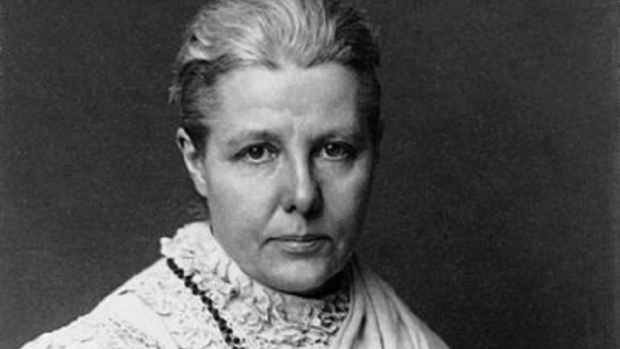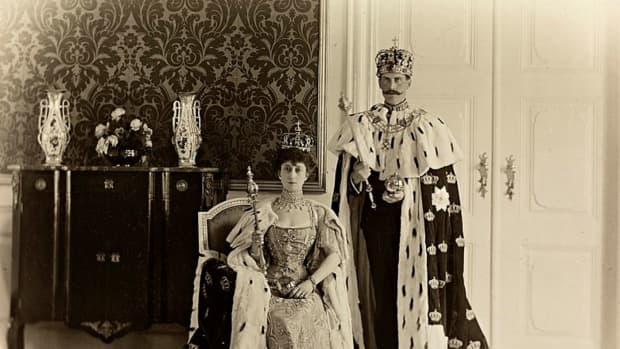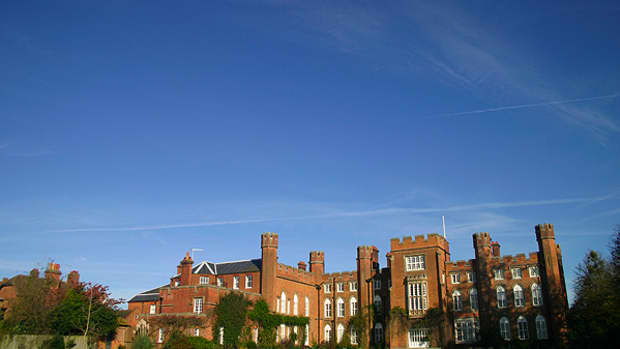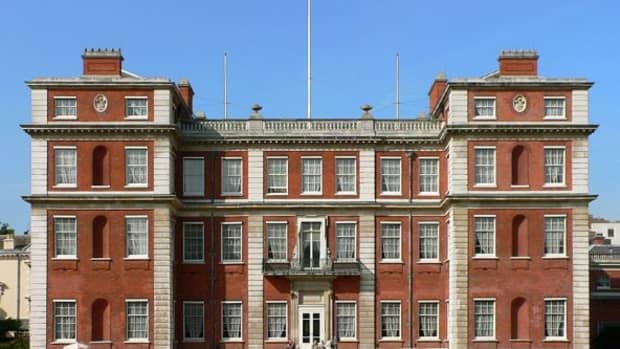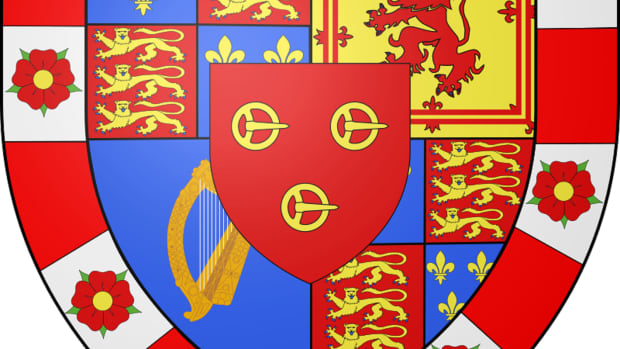British Born Queen Louise of Denmark and Norway's Life Story
Princess Louisa of Great Britain
Princess Louise of Great Britain was the youngest child and fifth daughter of the future King George II of Britain (1683-1760) and Caroline of Ansbach (1683-1737), then titled the Prince and Princess of Wales.
Originally christened Louisa, she arrived at Leicester House in London on the 18th of December, 1724 on the Gregorian calendar adopted in 1752. Today, the land on which the royal home stood boasts Leicester Square, the iconic venue for film premieres. On the 11th of June, 1727, her grandfather George I (1660-1727) passed away while travelling to Hanover. Her father became king.
George was prone to giving way to his temper. Caroline of Ansbach was an intelligent and progressive parent; she advocated smallpox vaccinations for her children and the wider society. However, there was someone missing from their family life: Louise’s eldest brother Frederick (1707-1751), the heir to the British and Hanoverian thrones.
When George I relocated from Hanover to Britain in 1714 with George and Caroline, the seven-year-old Friedrich Ludwig was left in Hanover in a symbolic gesture to prove that the Georges would not forsake Hanoverian interests.
Queen Caroline's Death
In 1728, Frederick travelled to England for the first time. George and Caroline couldn’t tolerate him because he would not yield to their rules. He was similarly displeased by the strangers who were his biological parents.
On the 20th of November, 1737, Louise and her siblings lost their mother. The queen had ignored symptoms of an umbilical hernia suffered during her final pregnancy in 1724. It became life-threatening in late 1737. Her bowel burst on the 17th of November, and death loomed. His parents banned Frederick, Prince of Wales, from the royal bedchamber and her funeral. George and the royal family, perhaps not Frederick, genuinely mourned the loss of Caroline.
Marriage to Denmark and Norway's Crown Prince
As was expected of a senior royal princess, she was married for dynastic purposes rather than for love. Two of her four sisters, Anne and Mary, were married into European houses, with only fair to middling success. Amelia and Caroline never married.
The groom for Louise’s marriage was Crown Prince Frederick of Denmark and Norway, later King Frederick V (1723-1766). A proxy wedding was held on the 10th of November 1743, and the couple married in person in the Duchy of Holstein in today’s northern Germany on the 11th of December 1743. His pious parents, King Christian VI (1699-1746) and Sophia Magdalene of Brandenburg-Kulmbach (1700-1770), had been contending with Frederick’s hedonism and encroaching alcoholism. His marriage was intended to settle Frederick’s wild nature; it was marriage or disinheritance, according to contemporaries.
Of greater importance to Frederick’s father was the hope that through this marriage, the British would support his plan to secure the Swedish throne. This plan was not realised. George II promoted the match because he wanted an ally against Prussia in the War of the Austrian Succession (1740-1748).
Crown Princess Louise's "Blind Eye" Approach
Louise bid farewell to her English courtiers and was given a household staffed by strangers. Her lord chamberlain and chief lady-in-waiting were the married Carl and Christiane Juel. They retained their positions throughout Louise’s life and beyond.
Frederick had no wish to reform. The couple got on reasonably well because she chose early on to turn a blind eye to Frederick’s affairs and his “Bacchus parties,” which were essentially orgies with prostitutes catering to the sadomasochistic whims of the royal heir and his friends. She didn’t take an active interest in politics and made few enemies. Arguably, these were points 1 and 2 in the “Royal Bride Survival Guide.”
She found her pleasures in reading, dancing, music and theatre and was very popular. She impressed people by learning to speak Danish in a predominantly German-speaking court. She raised her children to converse in Danish too. Ironically, her husband knew very little Danish because his parents and tutors had thought it unnecessary to teach him the language. His mother referred to him as the Danish Prince as a joke because of this hole in his education.
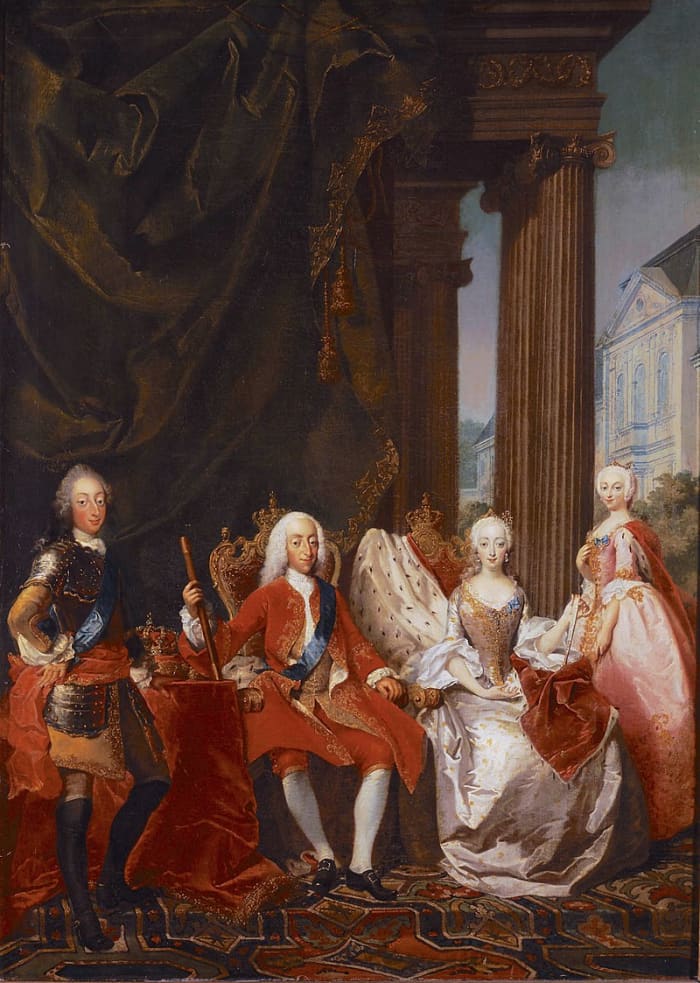
King Christian VI and Queen Sophie Magdalene, Crown Prince Frederick and Crown Princess Louise of Denmark and Norway. Tuscher, 1744.
Wikipedia
Recommended
The Legitimate Royal Family
Louise had five children with Frederick between 1745-1750, the same number that his mistress Else, Madam Hanson is said to have borne him between 1746 and 1751. Unusually for the era, rather than relying on nursery staff, Louise invested much of her time in her children’s daily life.
They were:
- The tragically short-lived Christian Crown Prince of Denmark (1745-1747).
- Sophia Magdalena (1746-1813).
- Wilhemine Karolina (1747-1820).
- Another Christian who became King Christian VII (1749-1808).
- Louise (1750-1831); this Louise’s eldest daughter Marie (1767-1852) married Frederick VI (1768-1839,) the last king of Denmark and Norway jointly (see below).
Queen Louise Dies Suddenly
On the 6th of August 1746, Frederick became King Frederick V and thanks to his reliance on alcohol, his ministers ruled rather than him.
Louise died unexpectedly at the Christiansborg Palace in Copenhagen on the 19th of December 1751, the day after her 27th birthday, from complications after a miscarriage. She was widely mourned by the public. She died in the same year that her brother Frederick, Prince of Wales, passed away aged 44. George II commented on the double loss:
“This has been a fatal year for my family. I lost my eldest son but I am glad of it ... Now [Louisa] is gone. I know I did not love my children when they were young: I hated to have them running into my room; but now I love them as well as most fathers.”
It’s fair to say that being born a Georgian princess and made a queen of Denmark and Norway did not guarantee Louise's happiness.
Frederick V married again in 1752 to the unfortunate twenty-two-year-old Juliana Maria of Brunswick-Wolfenbuttel (1729-1796.) He had a son with her, but his reign was largely a series of parties, drunken accidents and dalliances.
Postscript: The Sorry Tale of Christian VII and Caroline Matilda
Louise would have been horrified to discover that not only did her children have to witness their father’s continued drunken behaviour but that her son Christian’s governor Christian Ditlev, Count of Reventlow (1710-1775), was a bully who left the naturally intelligent Crown Prince Christian poorly educated and erratic in nature. Sadly, he self-harmed and hallucinated. Later analysis suggested that Christian suffered from schizophrenia.
Christian VII ascended the throne in January 1766 when Frederick V died, but he ruled in name only from 1772. Caroline Matilda of Great Britain, Louise’s niece through Frederick, Prince of Wales, did not know of Christian’s illness when they married on the 8th of November 1766.
Unhappily married, she caused a scandal at the Danish court by having an affair with her doctor, Streunsee, and she possibly bore his child, a daughter named Louise Auguste. Her son, the future Frederick VI (see above), was deemed legitimate. The doctor was executed, Caroline Matilda was divorced, banished to Celle in Hanover, and she died of scarlet fever on the 10th May 1775, aged 23. There was no happy-ever-after ending for this princess either.

Roskilde Cathedral, Denmark where royals have been laid to rest for centuries.
CucombreLibre CC2.0/Wikipedia
Sources
- Louise of Great Britain - The Popular Queen | History of Royal Women
- Princess Louisa of Great Britain, Queen of Denmark and Norway | Unofficial Royalty
- Caroline Matilda (1751–1775) | Encyclopedia.com
This content is accurate and true to the best of the author’s knowledge and is not meant to substitute for formal and individualized advice from a qualified professional.
© 2021 Joanne Hayle



